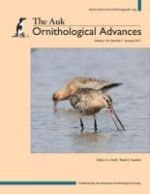Physical and environmental barriers drive evolutionary diversification by limiting gene flow among populations. Rivers are barriers to gene flow in birds and other vertebrates, but differences in ecological conditions among sites also can affect the genetic structure of populations. The Magdalena River Valley (MRV) of Colombia, the largest South American river valley west of the Andes, is an appropriate location in which to test for the joint role of physical and ecological barriers because the river separates populations to the east and west, and a marked precipitation gradient leads to the occurrence of dry forests in the south and wet forests in the north. We conducted phylogeographic and population genetic analyses using mitochondrial DNA sequences of 4 avian species (Xiphorhynchus susurrans, Mionectes oleagineus, Leptopogon amaurocephalus, and Eucometis penicillata) sampled across 15 localities along the MRV. We found no spatial genetic structure in any of the species in the MRV region, and thus failed to find evidence for the role of the river or of the precipitation gradient as a driver of population differentiation. Gene flow across the river may be facilitated by its narrow headwaters and may occur as a consequence of river dynamics reducing its effectiveness as a barrier. Also, the dispersal abilities of the species may allow them to overcome the potential barrier that the river represents. As for the ecological barrier, we did not find that it caused any effect on the populations that we studied, probably because climatic differences were not strong enough to have led to population isolation along the MRV; alternatively, it is possible that the time elapsed since the origin of the precipititation gradient has been insufficient to lead to detectable effects on population structure. Our results contrast with work in other regions, which has shown marked genetic structure of vertebrate populations across major Neotropical rivers.
How to translate text using browser tools
7 December 2016
Is the largest river valley west of the Andes a driver of diversification in Neotropical lowland birds?
Juliana Sandoval-H,
Juan Pablo Gómez,
Carlos Daniel Cadena

The Auk
Vol. 134 • No. 1
January 2017
Vol. 134 • No. 1
January 2017
Colombia
ecological barriers
Eucometis
Leptopogon
Magdalena Valley
Mionectes
riverine barriers




